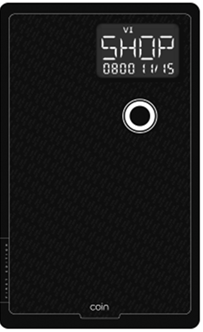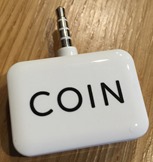NOTICE: This post references card features that have changed, expired, or are not currently available
My wife and I have 30 active credit card accounts. Give or take. If you include authorized user cards, the total is closer to 70. We regularly open new cards for the signup bonuses. After a year with each card, we evaluate whether to keep the card, downgrade it to a no fee card, or cancel it outright. More often then not, we keep it or downgrade it. 
Some cards have benefits that make them worth the annual fee even if you never use the card. A great example is Chase’s $49 per year IHG card which offers a free anniversary night each year at any IHG property worldwide. That includes properties like the Intercontinental London Park Lane where rooms routinely sell for over $700 per night. Other cards are worth keeping because they offer great rewards for spend. The Chase Ink Cash and Ink Plus cards, for example, offer 5X points for phone, cable, internet, and office supplies. Since it’s often possible to buy gift cards to other merchants at office supply stores, it’s possible to extend the 5X benefit way beyond those categories. Then there are cards worth keeping for their occasional bonuses. Barclaycard, for example, often offers great bonuses to encourage cardholders to use their cards (see this post, for example). And, some cards are worth keeping for their retention bonuses. Citi, for example, often has terrific offers for those who agree to keep their cards.
One downside of hoarding credit cards is that they’re not easy to carry around. I don’t want a George Costanza wallet. When I go out, I try to predict which cards I’ll need. Will I go to an office supply store? If so, I’ll need my Chase Ink card (5X points!). Will I make a purchase that qualifies for an Amex Offer? Then I’ll need an Amex card that is registered to that offer. And, if I’m traveling internationally, I make sure to take cards with no foreign transaction fees, and at least one card with chip & pin capabilities (like the Arrival Plus card).
When it comes to packing my wallet, I don’t always get it right. Sometimes, for example, I’ll find myself at a gas station and only then remember that my Chase Freedom and/or Discover card is offering 5X for gas that quarter. Or, I’ll check into a hotel and realize that I didn’t bring the card that would have earned the most bonus points there. Or, I learn that OfficeMax is selling Visa gift cards at a discount, but my Ink card is at home.
Digital Wallet Cards, also called Smart Cards, offer a solution to these card juggling woes. Competing devices differ in their specifics, but they generally work like this: the consumer loads all of their credit cards into a smart phone app and then selects a smaller number of these cards to be loaded onto the digital wallet card (which looks a bit like a regular credit card). When the consumer goes to use the digital wallet card, they select which credit card they want to be active for each transaction. Then, the card should work just like a credit card (keyword is “should”).
Coin Digital Wallet: Setup
I was pretty excited when my Coin card arrived a couple of months ago. I finally had a solution to my credit card hoarding woes! If it worked as advertised, I could reduce my wallet to a single digital wallet card and maybe one regular credit card for backup. That would be sweet!
Coin comes with a small credit card swipe reader that plugs into your smartphone’s headphone jack. To get started, I downloaded the Coin app to my phone and paired it with my card. Next, I used the swipe reader to load a few dozen credit and debit cards to the Coin app. Finally, I picked 8 of those cards to sync to the Coin card itself (eight is the max supported by Coin at one time).
The process of loading credit cards to the Coin app was simple enough. Strangely, the app offers the option to enter a card’s number without swiping it, but you can’t actually use that card until you’ve verified it… by swiping it. Other than that little oddity, I found the process easy and intuitive. Coin allows you to enter a four character name for each card. This, to me, was a fun challenge. I thought carefully about each card to ensure that I would recognize the four letter name whenever I whipped out my Coin card. My cards now have names like ATM, INK (Chase Ink), PREM (Citi Premier), PRES (Citi Prestige), PLAT (Amex Platinum), DISC (Discover), SPG (SPG hotel card), SPGB (Business version of SPG card), etc.
Synching cards from the phone app to the Coin card is also easy. Press the button on the card (the circle below the e-ink display) to turn the card on, and then press and hold the button to put it into SYNC mode. The card shows the word “SYNC” so there’s no doubt that you got it right. The syncing process is initiated from the Coin app and only takes a few seconds to complete.
Coin Digital Wallet: How it Works
The Coin card automatically locks itself when not in use. To unlock it, you can setup and memorize a pattern of 6 long or short button presses (Coin calls this a Tap Code), or simply allow it to unlock automatically when you click the button once with your phone nearby. I’ve used the tap code so infrequently that I don’t even remember it. As long as I’ve remembered to leave Bluetooth running on my phone, the phone unlock method has worked great.
To select which card is currently active, you simply press the button. Each press of the button switches the device to the next available credit card. The card’s screen initially shows the card’s four letter name along with an NFC indicator if the selected credit card works with Coin’s tap to pay feature (more about that later). After a second or two, the display changes to show key info about the card: the active card’s type (Visa, MC, Amex, Disc), the last four digits of the card number, and the card’s expiration date.
Once a particular credit card has been selected, you can pay with Coin either by swiping the card on a swipe terminal or by tapping the card on a tap-to-pay terminal.
It sounds great, right?
My Experiences with Coin
I have three ATM cards that I use regularly. It would have been a nice little win just to replace those three cards with Coin. So, on my first day with Coin, I synced my ATM cards and went on my way to deposit a few checks. My first stop was at PNC bank. I selected the card I had named “PNC” and stuck Coin into the PNC ATM. This particular ATM usually sucks cards inside the machine to read them before spitting them back out. My Coin didn’t taste good to PNC, though. The ATM had no interest at all in sucking in my Coin. That was a quick fail!
Next, I made my way to Chase where I have both a personal and a business account. I started with the business account, “ATMB”. It worked! Then the personal account, “ATM.” It worked too! Great! I decided right then and there to officially put away two of my debit cards in favor of one Coin. Win!
Then, a month later…
I returned to the Chase ATM to withdraw cash, but the machine repeatedly failed to recognize the Coin card. I tried both my personal account and my business account, but neither worked. At one point, the card got stuck: I couldn’t get the darn thing out! Finally, when I was just short of panic, the ATM released its digital wallet hostage. It was then that I realized what had happened. Chase had updated the ATM to read the EMV chip on the ATM card. The machine purposely holds tight to the card until it is done reading the chip. Since Coin doesn’t have an EMV chip, the ATM couldn’t read it. Sigh. Fail.
At this point, my Coin card continues to work at older ATMs, but not at new ones. It’s better than nothing, but certainly not a complete solution.
Restaurant experiences have been better. In most cases, Coin has worked without issue at restaurants of all kinds. At Panera I even tested out the tap to pay feature and it worked flawlessly. I have had a few hiccups, though. At a well known deli in Ann Arbor, the cashier couldn’t get the swipe reader to recognize the card. He was quite excited about the idea of a digital credit card, though. In his excitement he dropped my card… and lost it. After about five minutes of looking all around the register, he finally found it – the card had somehow found its way through the small opening in the cash drawer. I think it was hiding in embarrassment.
At another restaurant, the waitress took my card but didn’t swipe it for a while, so the display had turned off. She came back to ask me whether it was a Visa or MasterCard or what. I clicked the button to wake up the card and to display “Visa”. It then worked fine.
Hotel check-in desks proved to be a complete failure. Not only did the card slow things down due to confusion over what the card was, but in the two times I tried it, the card simply didn’t work. Interestingly, the card did work at every hotel restaurant that I tried. Anyway, I should have tried Coin at more than just two hotels, but it seemed like more trouble than it was worth.
Paying at the pump at gas stations, so far, has worked flawlessly. I haven’t yet tried using the card inside a gas station, but I expect it would work.
Retail stores have been a mixed bag. Sometimes the card works, sometimes it doesn’t. Here’s the pattern I’ve seen: If the store is equipped to read EMV chips, then I can get Coin to work only by using it’s tap-to-pay feature (simply tap the card on the terminal) or by selecting a credit card that is not yet equipped with a chip. The problem is that there are a number of stores that accept EMV chips, but do not yet support tap-to-pay. Both Target and Walmart fall into this bucket. Neither supports tap-to-pay at the time of this writing. So, the only way to use Coin at those stores, in my experience, is to select a credit card that doesn’t have a chip. And, of course, chip-less credit cards are quickly going extinct.
One pleasant surprise with Coin was at the American Express Centurion Lounge in Las Vegas. I had forgotten to pack my wallet with my Amex Platinum card, so I whipped out Coin instead. I knew that I could get in without the card (because I had read this Travel with Grant post), but I also knew it would be quicker and easier if I could simply select “PLAT”, swipe, and enter. When the woman behind the counter saw my Coin card she immediately told me that it wouldn’t work. Apparently someone had tried it before, unsuccessfully. But, I was using Coin 2.0 during its early days of release, so I thought it was likely that the previous Coin user she spoke of had used Coin 1.0. Maybe 2.0 would work? The Centurion Lounge agent was happy to give it a try – and it worked! I tried it again a few days later at the Centurion Lounge in Miami. And, again, it worked.
My backup card
Now that I’ve lived with Coin for a few months, I still carry it everywhere, but only for backup. I simply can’t trust it to work wherever I happen to be. Instead, as before, I pack my wallet with the cards I think I’ll need. And, in case I get it wrong, Coin comes along too. My wallet hasn’t gotten slimmer. It’s gotten bigger by one card.
Now, when I’m at a gas station and remember that Discover is offering 5% cash back this quarter for gas, I’ll reach for Coin. Maybe it will work.
Next Up: Plastc and Swyp
I love playing with new gadgets, so I ordered all of the digital wallet cards that I’m aware of. These will be valid business expenses for the blog. As I reported before, Stratos encountered financial difficulties and had to sell its business, so I’m not holding my breath on that one. Wocket was the first card to arrive, but it is an abomination that requires you to carry around not just the card, but also a device as big as my wallet. Plastc and Swyp look interesting. Both say they will support EMV, and both appear to have more detailed digital displays than Coin. I’ll have to wait, though. Plastc is supposed to ship no earlier than April 29th [UPDATE: Now expected “August/September 2016”]. And, Swyp says “early summer.”

A few people have asked me for referrals. Here goes:
- Plastc: Use this link to save $20. I’ll get a $20 Amazon gift card.
- Swyp: I don’t think Swyp has a referral program. Here’s a direct link instead.
- Coin: Coin’s referral program is only active for 90 days after you pre-order Coin. I ordered mine more than 90 days ago. So, check the comments of this post to see if anyone has posted their referral link. Or, here’s a direct link.




[…] all of those digital wallet smart cards? These were devices that looked like regular credit cards but were capable mimicking all of your […]
[…] The idea behind digital wallet cards was great: A single smart credit card would replace all of your credit, debit, and gift cards. But just as the technology caught up to the promise, the US adopted EMV chips. And, unfortunately, Digital wallet cards can’t handle EMV. Several companies claim that they’re still working to release their digital wallet cards, but I think that 2017 is the year that they’ll officially throw in the towel. See also: Coin Digital Wallet Card Review. […]
http://card.brilliantts.com/ Check this out!! Another digital card with EMV
Thanks! It’s unclear when this will be available though.
I’m most worried about losing/getting it stolen. If that happens, ALL of my cards are stolen, which becomes a major pain and nightmare with all of the auto-pays I have set up on various cards. It’s bad enough dealing with one card that gets compromised. Since I buy so much via online / phone, I have all of my #s memorized. Real pain to get a new # for a card you’ve used forever.
Actually, that’s one issue that you probably shouldn’t worry about. Unless a thief has your tap-passcode or your phone, they won’t be able to access any of the credit cards.
[…] Coin Digital Wallet Card Review by Frequent Miler. Nice to see an in depth review of this card, I knew no EMV support would be a massive issue and it looks like it is. These digital cards are kind of pointless unless they work flawlessly and even then the hassle of explaining what they are must get tiresome. […]
The mobile contactless payment method trend will make these pointless soon enough and EMV will seal the deal because it will become a requirement for physical card transactions faster than most realize. Card issuers and networks have no incentive to play nice with these companies. This stuff isn’t going anywhere.
It was pointless before it shipped since it has no EMV chip.
The reason Plastc is delayed is because they need to partner with each bank to be able to write to the EMV chip. As you can imagine banks don’t just let startups start issuing their cards without a metric crap tonne of hoops.
<>
Is the physical “ATM Card” you tried to mimic with Coin now EMV? Even newer ATMs should not outright reject magnetic only cards as not all ATM and Debit cards have been chip enabled. I keep an ATM only (not a debit card) and it will probably be one of the last cards to go EMV.
An EMV card has a “201” code on the magnetic stripe to tell the reader that the card has a chip and if the merchant is enforcing EMV, it will prompt for a chip read and not swipe (like what happens at Target and Walmart). Could this be what happened at the Chase ATM?
I just bought a stand alone LoopPay card and case and we’ll see if this works any better. The drawback is that it will not work where you need to dip the card into a reader like an ATM or gas pump. I picked them since it is a one time fee and I’ve noticed that so few of the merchants I shop at have turned on EMV chip reads, so I figure I’m good for another year or so with magnetic stripe, store gift cards will still be magnetic stripe, and I still have Apple Pay for contactless (although I’ve maxed out its 8 card limit).
Of the card proposals, I like Plastc the most because of the e-ink display which should work against red line bar code scanners unlike phone screens. But I don’t like that they that changed to an annual fee subscription model.
Yes, the physical ATM cards now have EMV chips. I’m sure that the ATM would have worked if I selected an ATM card without a chip (but I didn’t think to try that). It also works at older ATMs without trouble.
What happens if your wallet gets stolen or a deli cashier loses your coin? I’m assuming it’s on you to purchase a replacement at full cost? On the one hand it’s convenient that you wouldn’t have to call up all the banks and ask for replacement cards. On the other hand, $99 is a chunk of money I’d rather not have to spend.
I guess you can buy Coin with a credit card that offers loss/theft protection, but that would run out eventually. I don’t tend to worry about things like what happens if something is stolen — I’ll worry about it when it happens. Maybe that’s a reckless way to behave, but that’s what I do. That said, I wouldn’t recommend Coin at this point. If you’re interested, wait until a digital wallet card comes out with an EMV chip or wait until contactless payments are available everywhere and then simply use Apple Pay or something similar.
“I still carry it everywhere, but only for backup. I simply can’t trust it to work wherever I happen to be.”
Bingo. It has worked at about 50% of places domestically, and less than 10% internationally. With those statistics, it ends up making my wallet bigger instead of smaller. #fail
It’s a shame, too; I so wanted the tech to work. It just doesn’t.
I’ve been pretty disappointed with the coin. As acceptance is far from perfect, I at least have to carry a backup card, and if I’m not carrying all my cards I risk getting sub-par returns. I can’t really load ALL of my cards onto it at once, and if I do max out the 8 it can carry at once, it takes forever to cycle through all the cards. The coin doesn’t let you nickname cards, so if you can’t pick out your Visa ending in 5967 from the one ending in 4534 from the one ending in 4310 from the one ending in 2593 good luck picking out the right one without opening the app, logging in and flipping over the card image!
Do you have version 1 of Coin? Version 2 does allow 4 letter nicknames
Did you try with prepaid debit cards? How was the experience with loading Serve or buying money orders?
Maybe he’ll answer, but my answer is: waste of time in that regard for the main places you hope to buy a MO = expensive experiment.
Ive loaded VGC onto Coin without issue. Although, sometimes it will put in a pending charge and you have to wait for that to drop to use the full VGC amount.
Swipes fine at Walmart, although pretty pointless now (RIP SERVE)
I didn’t bother to try non-reloadable gift cards. I felt that it was too much work to load them into Coin for a one-time use. I did add NW Buxx prepaid cards and Serve cards to Coin. Here’s what I found:
1) Buxx: a $1 hold was put on each card for a week or so. That was annoying, but otherwise, it has worked fine.
2) Serve: Neither Walmart Kiosk nor Walmart Money Center terminal would recognize the card when I tried to swipe Coin to reload Serve. Had to get out regular card. I was surprised by that. It would have been nice to not have to carry around 5 Serve cards. Strangely, I tried a small purchase at the self-checkout counter and Serve in Coin worked fine there. I didn’t try rite aid or anywhere else.
Thanks for the review. I want this concept to work so badly, but every review I read makes it sound like the tech just isn’t ready for prime time. It’s like the smart card companies can’t keep up with the pace of changing standards.